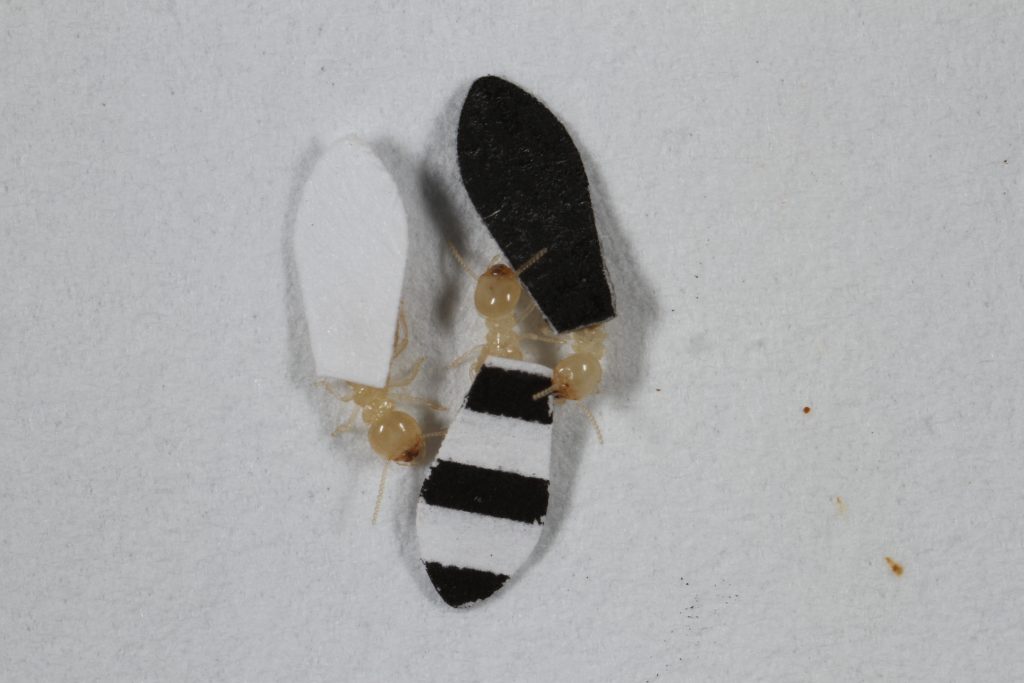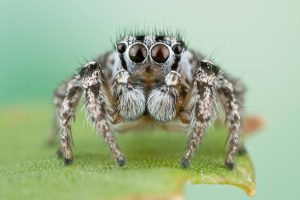
Lauren Gawel steadied her hand and lowered the bottle of Elmer’s glue to the tiny termite’s body. She applied a minute drop and pressed on a hand-cut, black-and-white striped paper cape. The termite superhero was ready for its moment in the spotlight.
Gawel was the principal investigator on a University of Florida study to determine if jumping spiders would avoid prey that had black and white stripes – a telltale warning sign among other predators. The study, recently published in the Royal Society’s Open Science journal, stands out as unique because it was run by a team of undergraduate researchers from UF.
Gawel and her colleagues recorded when the jumping spiders attacked termites who showed aposematism, which is a defense mechanism to warn predators they are toxic or undesirable. Stripes are often one of these traits, but scientists didn’t know if jumping spiders avoided stripes.
To test their theory, Gawel and her team glued teeny capes to termites and watched to see which ones caught the attention of two species of jumping spiders. Would the spiders avoid the black-and-white stripes like birds often did?
The study found that jumping spiders paid attention to termites with black capes and black-and-white capes because the cage had a white background, thus they were easier to spot. But they tended to avoid the black-and-white caped crusaders, suggesting the stripes tap into a deeper fear in the spiders’ instincts, said Lisa Taylor, a UF/IFAS assistant research scientist of entomology and faculty advisor for this study.

The study was a simple design and run by young scientists, which goes to show that everyone can add to research knowledge, Taylor said.
“It highlights the fact that people at all levels can contribute to science and that science is a team effort and it takes these clever, relatively straightforward experiments to get undiscovered insights,” she said.
Gawel, who is now a veterinary intern and has graduated from veterinary college at Tufts University, said her schooling at UF/IFAS and the lab experience she received set the basis for her veterinary career. Getting published was the icing on the cake.
“This is probably the coolest event in my life so far,” she said. “I owe it all to the fact that termites wearing capes are very, very cute.”
She said the hands-on animal behavioral research she conducted helped prepare her for the next phase of her animal-focused career.
“Being in the entomology lab and having those experiences and doing research like that from start to finish was so integral for what my life will be,” she said. “I’ll need to publish more research, and I got a basis for that in undergrad, which is so incredibly important.”
Taylor said UF is a well-known hub for real-world research experience for students.
“UF gives these amazing opportunities to take part in research that is read worldwide,” she said.
 2
2
